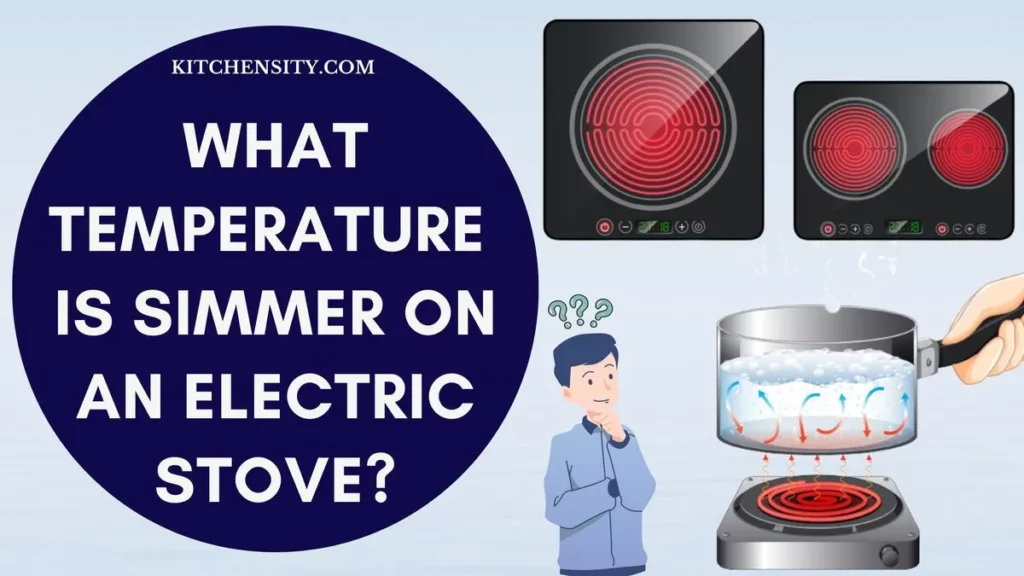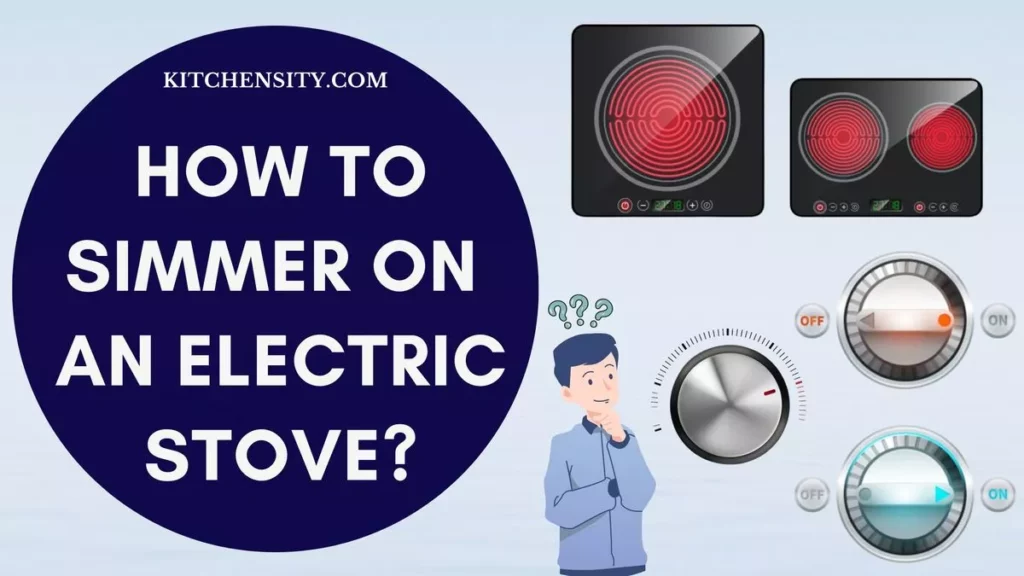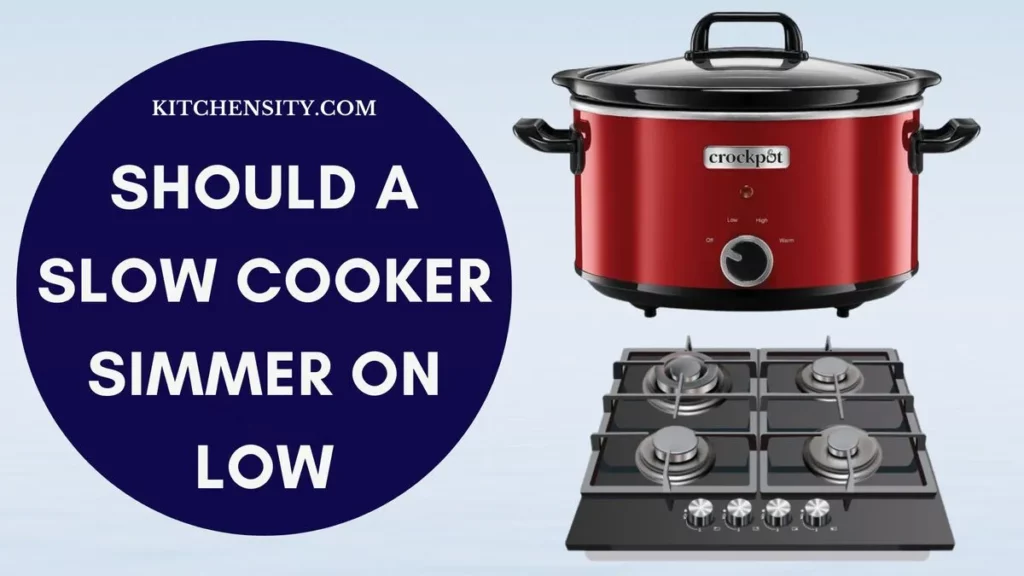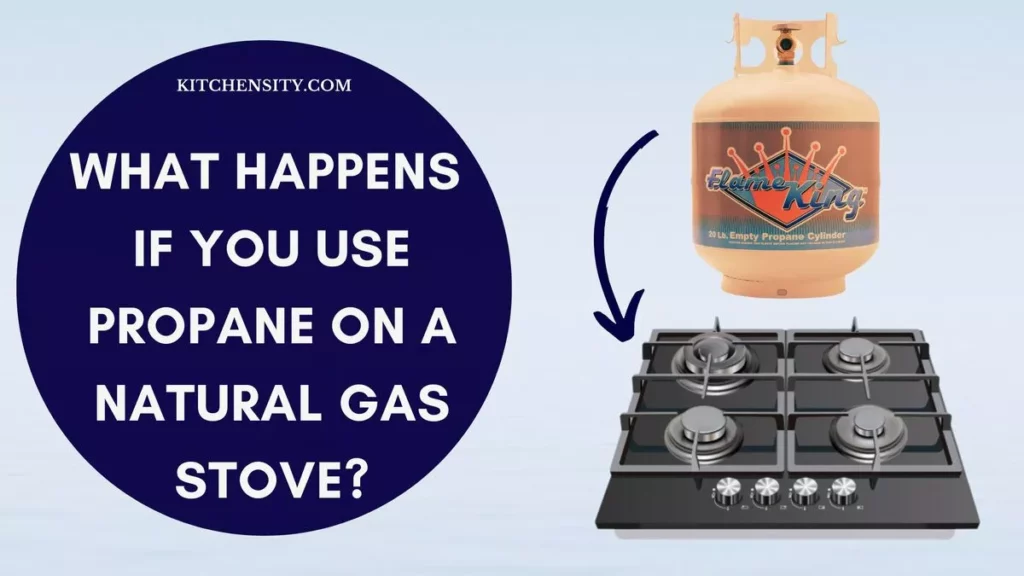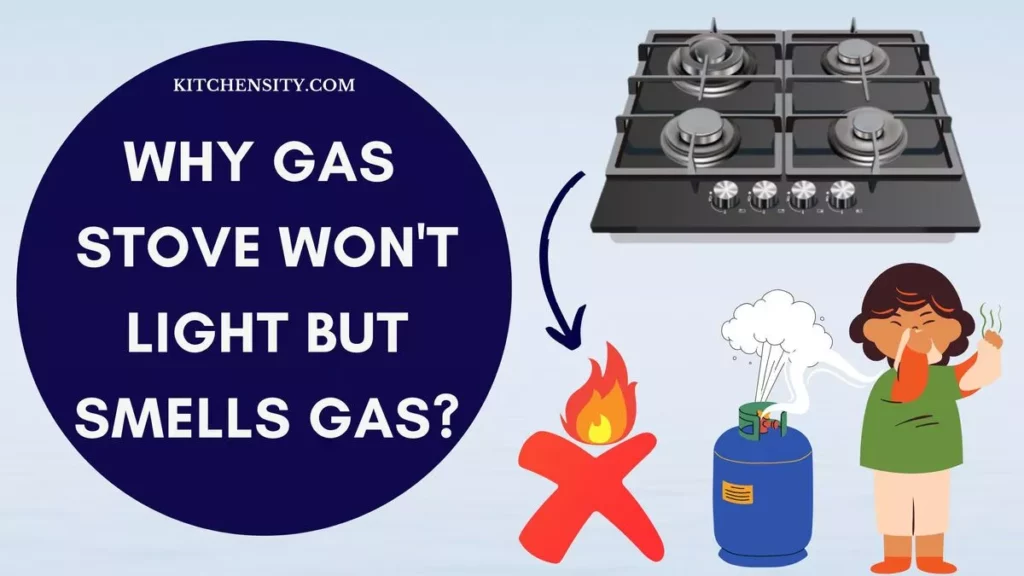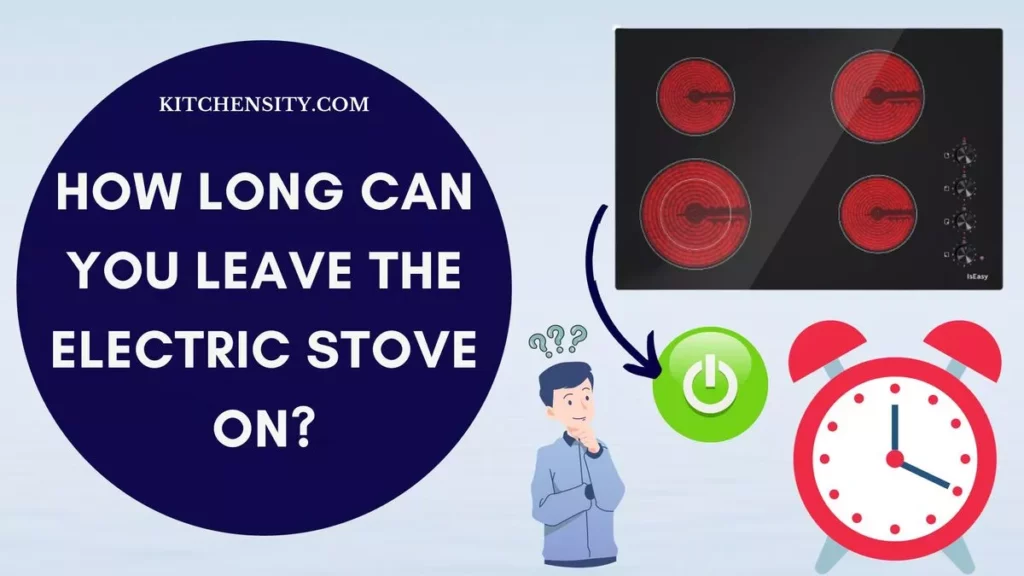Cooking is an art that involves mastering various techniques and understanding the subtleties of temperature control.
One common question that often arises in the culinary world is, “Is simmer lower than low?“
In this article, we will delve into the intriguing world of simmering, exploring its differences from low heat, the science behind it, and its culinary applications.
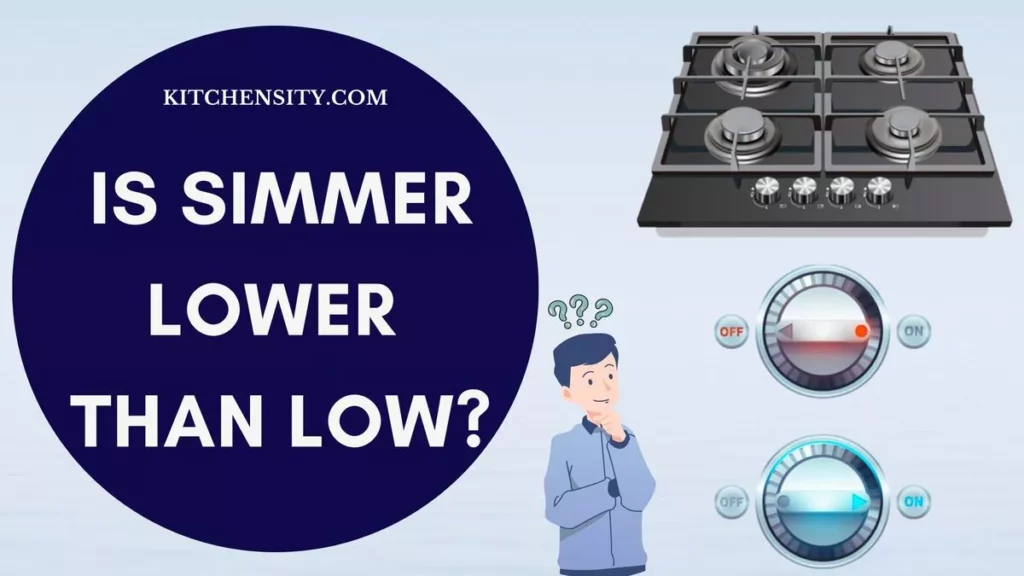
Table of Contents
- 1 Is Simmer Lower Than Low?
- 2 Understanding Simmering
- 3 The Phases Of Simmering
- 4 Understanding The Heat Spectrum
- 5 Is Simmer Identical To A Low? Simmer Vs Low Heat
- 6 Is Simmer Low Or 2?
- 7 Simmering On The Stovetop Or In The Oven
- 8 Benefits Of Simmering
- 9 When To Choose Simmering?
- 10 Final Verdict
- 11 FAQs – Is Simmer Lower Than Low?
Is Simmer Lower Than Low?
No, the simmer is slightly higher in temperature than low. Simmering involves maintaining a gentle heat just below the boiling point, typically around 180°F to 205°F (82°C to 96°C), making it a bit warmer than the low heat setting. This subtle temperature difference is important for slow, flavor-rich cooking.
Also Read – How To Simmer On An Electric Stove?
Understanding Simmering
Simmering is a fundamental cooking technique that involves maintaining a gentle, consistent heat just below the boiling point. This method is widely used in the culinary world and is distinct from boiling or cooking on high heat.
To better grasp the concept of simmering, let’s explore its key characteristics and its role in creating delicious dishes.
The Basics of Simmering
- Temperature Range: Simmering typically occurs within a temperature range of 180°F to 205°F (82°C to 96°C). It’s important to keep the heat steady within this range to achieve the desired results.
- Bubble Formation: During simmering, small, occasional bubbles rise to the surface of the liquid. These bubbles are gentle and slow compared to the rapid, vigorous bubbles of boiling.
- Cooking Process: Simmering is employed for recipes that require slow, gentle cooking over an extended period. It is often used for dishes like soups, stews, sauces, and braises, where flavors need time to meld and ingredients need to tenderize.
Also Read – What Temperature Is Simmer On An Electric Stove?
The Phases Of Simmering
Simmering, as a cooking technique, involves a distinct set of phases that food goes through as it cooks at a gentle, steady heat just below the boiling point. Understanding these phases is crucial for achieving the desired results in your culinary creations.
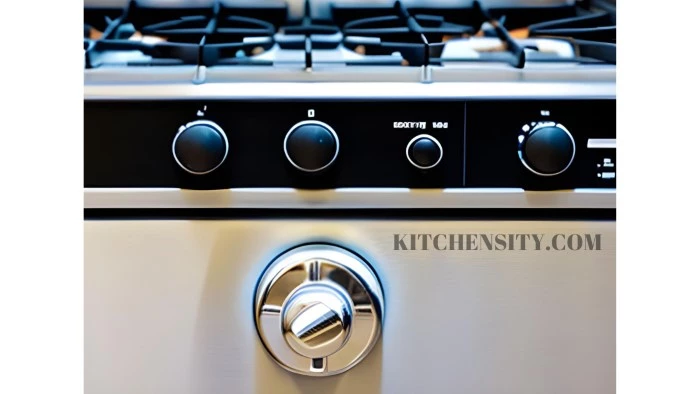
Let’s explore the phases of simmering:
Phase 1: Heating And Transition
- Temperature: At the start of simmering, the temperature of the liquid begins to rise. It gradually reaches the lower end of the simmering temperature range, typically around 180°F (82°C).
- Visual Clues: Initially, there may be no visible signs of simmering. The liquid may appear still, but tiny bubbles may start forming at the bottom of the pot.
- Cooking Actions: During this phase, it’s essential to keep a watchful eye on the heat source. Adjust it to maintain the desired temperature range for simmering.
Phase 2: Gentle Bubbling
- Temperature: As the temperature continues to rise, the liquid reaches the heart of the simmering range, usually around 195°F (90°C).
- Visual Clues: In this phase, you’ll notice small, gentle bubbles rising to the surface of the liquid. These bubbles are not as rapid or vigorous as boiling but are consistent and steady.
- Cooking Actions: It’s crucial to maintain the temperature within the simmering range during this phase. Keep the lid slightly ajar to allow excess moisture to escape.
Phase 3: Flavor Infusion
- Temperature: The temperature remains within the simmering range, typically around 200°F (93°C).
- Visual Clues: Simmering at this stage is characterized by a consistent, gentle bubbling. The liquid’s surface may have a slight shimmer.
- Cooking Actions: This is the phase where flavors start melding together. It’s ideal for dishes like soups, stews, and sauces, as ingredients release their flavors into the liquid.
Phase 4: Long, Slow Cooking
- Temperature: The temperature is maintained within the simmering range, ensuring a gradual, even cooking process.
- Visual Clues: The simmering liquid continues to exhibit a steady, gentle bubbling. Ingredients in the pot or pan become increasingly tender and flavorful.
- Cooking Actions: This phase is all about patience. Simmering allows tough cuts of meat to become tender and for complex flavors to develop over time.
Phase 5: Achieving The Desired Consistency
- Temperature: The temperature remains within the simmering range, around 205°F (96°C).
- Visual Clues: Simmering at this stage continues to produce small, consistent bubbles. The liquid may reduce, thickening sauces naturally.
- Cooking Actions: As you approach the end of cooking, you can adjust the simmer to reach your desired consistency. Allow some moisture to evaporate for a thicker sauce or continue simmering for a longer time if necessary.
Also Read – What Temperature Is Simmer On An Electric Stove?
Understanding The Heat Spectrum
To understand whether simmer is lower than low, it’s essential to explore the heat spectrum in cooking. The heat spectrum encompasses various temperature levels, each serving specific culinary purposes. Let’s delve into these different heat levels:
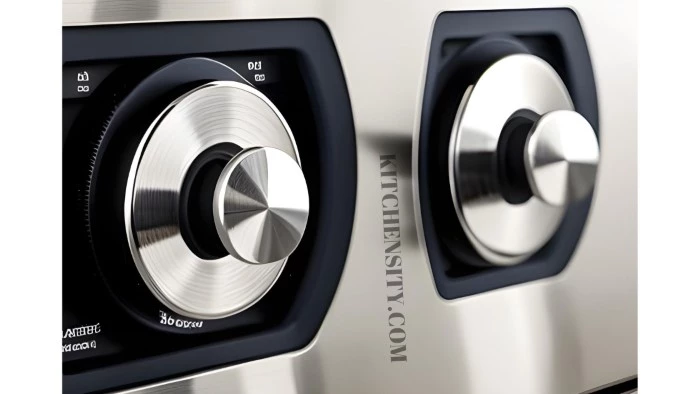
High Heat
- Temperature Range: High heat is the highest temperature level used in cooking. It typically ranges above 400°F (204°C) and can go much higher depending on the cooking method.
- Common Uses: High heat is ideal for quick cooking methods like searing, stir-frying, and roasting. It provides the intense heat necessary to create caramelization, crispy textures, and a Maillard reaction, enhancing flavors and creating appealing textures.
- Examples: Searing a steak, stir-frying vegetables, and roasting a chicken are common applications of high heat.
Medium Heat
- Temperature Range: Medium heat is a moderate temperature level, typically ranging from 300°F to 375°F (149°C to 190°C).
- Common Uses: Medium heat is often used for sautéing, shallow frying, and browning. It allows for thorough cooking without the extreme temperatures of high heat.
- Examples: Sautéing onions and garlic, browning ground meat, and pan-frying fish are typical uses of medium heat.
Low Heat
- Temperature Range: Low heat is a gentle temperature level, ranging between 200°F to 275°F (93°C to 135°C).
- Common Uses: Low heat is employed when you need to cook foods gently, prevent burning or overcooking, and keep dishes warm without further cooking.
- Examples: Keeping a sauce warm, melting chocolate, and slowly reducing a sauce are instances where low heat is preferred.
The Connection Between Simmer And Low Heat
Now that we’ve explored the heat spectrum, it’s evident that simmering falls within the range of low heat but slightly higher in temperature. Simmering typically occurs in the range of 180°F to 205°F (82°C to 96°C), making it a gentle, steady heat level that is just below the boiling point.
So, simmering and low heat are closely related but not identical. Simmering is a specific subset of low heat, characterized by maintaining a gentle bubbling, which is slightly higher in temperature than what is generally considered low heat.
This subtle distinction is crucial in cooking, as it allows for the slow cooking and flavor development essential for a wide range of dishes.
Also Read – Best Cookware For Electric Stoves
Is Simmer Identical To A Low? Simmer Vs Low Heat
No, simmering is not identical to low heat in cooking. While both simmering and low heat involve gentle cooking, they are distinct in terms of temperature and culinary purposes.
Here’s a concise comparison:
Simmering
- Simmering occurs at a slightly higher temperature range, typically between 180°F to 205°F (82°C to 96°C).
- It involves maintaining a gentle, steady heat just below the boiling point, resulting in small, occasional bubbles rising to the surface.
- Simmering is used for recipes that require slow, even cooking, allowing flavors to meld and ingredients to tenderize. It’s commonly employed in soups, stews, sauces, and braises.
Low Heat
- Low heat is an even gentler temperature level, usually ranging from 200°F to 275°F (93°C to 135°C).
- Cooking on low heat prevents food from reaching a simmering or boiling point. It’s often used for keeping dishes warm or gently melting ingredients.
- Low heat is employed when you want to avoid further cooking, as in the case of keeping a sauce warm without reducing it further or melting chocolate without scorching it.
While both simmering and low heat involve gentle cooking techniques, simmering operates at a slightly higher temperature and is specifically geared towards slow cooking and flavor development, whereas low heat serves to maintain warmth and prevent overcooking or burning.
Also Read – Can Induction Pans Be Used On Gas Stoves?
Is Simmer Low Or 2?
In culinary terms, “simmer” is typically considered a level of heat that falls between “low” and “2” on a stovetop dial or control knob.
- “Low” heat is usually the gentlest setting and is often used to keep dishes warm or to melt ingredients without further cooking.
- “Simmer” is slightly higher than “low” and is characterized by maintaining a gentle, steady heat just below the boiling point. It is commonly used for slow cooking and flavor development.
- “2” on the dial represents a higher heat level, which may be suitable for simmering but could potentially bring the liquid to a more vigorous simmer or even a boil, depending on the stove.
So, while “simmer” is not precisely the same as either “low” or “2,” it is typically closer to “low” but slightly higher in temperature.
Achieving the desired level of simmering depends on the specific recipe and the stove’s characteristics, so it may require some adjustment to find the perfect balance between “low” and “2” for your cooking needs.
Simmering On The Stovetop Or In The Oven
Simmering is a versatile cooking technique that can be achieved using various methods, including on the stovetop and in the oven. Each approach offers unique advantages and is suited to different types of dishes.
Let’s explore the benefits of simmering on the stovetop and in the oven:
Simmering On The Stovetop
- Controlled Heat: Stovetop simmering provides precise control over the cooking temperature. You can easily adjust the heat level to maintain a gentle simmer throughout the cooking process.
- Quick Adjustments: Stovetop simmering allows for quick adjustments in case the temperature needs fine-tuning. You can raise or lower the heat source as needed.
- Wide Range Of Cookware: You can use a variety of pots and pans on the stovetop, such as saucepans, Dutch ovens, and skillets, depending on the dish you’re preparing.
- Efficient Reduction: Stovetop simmering is excellent for reducing sauces and broths to achieve the desired consistency. The controlled heat helps evaporate excess moisture gradually.
- Stirring And Monitoring: Simmering on the stovetop allows you to easily stir and monitor your dish. You can check the texture, and taste, and adjust seasonings as needed.
- Ideal For Sauteeing: You can begin many simmered dishes by sautéing ingredients on the stovetop first. This provides a flavorful base before transitioning to simmering.
Simmering In The Oven
- Even Heat Distribution: Oven simmering offers consistent and even heat distribution, ideal for dishes that benefit from gentle, all-around cooking.
- Hands-Off Cooking: Once you place a dish in the oven to simmer, you can largely leave it unattended. This is convenient for busy cooks or when preparing dishes that require long cooking times.
- Braising And Roasting: Oven simmering is perfect for braising tough cuts of meat or roasting dishes like pot roasts and casseroles. The slow, even heat helps tenderize meat and meld flavors.
- Crispy Toppings: If your dish includes a topping that benefits from crisping, like breadcrumbs or cheese, oven simmering can help achieve that desirable texture.
- Large Batches: The oven’s spacious interior is suitable for cooking larger batches of simmered dishes, making it ideal for family gatherings or meal prep.
- Reducing Sauces: Similar to stovetop simmering, the oven can also be used to reduce sauces and create concentrated flavors.
So, the choice between simmering on the stovetop or in the oven depends on the specific dish you’re preparing and your cooking preferences.
Stovetop simmering offers precise control and is excellent for recipes that require active monitoring, while oven simmering provides even heat distribution and is convenient for dishes that benefit from hands-off cooking and slow, steady simmering.
Both methods have their place in the kitchen and can help you achieve delicious, well-cooked meals.
Also Read – Can Clay Pots Be Used On The Gas Stove?
Benefits Of Simmering
Simmering is a cooking technique that offers numerous benefits, making it a valuable method in the culinary world. Whether you’re preparing soups, stews, sauces, or various other dishes, simmering can enhance the quality and flavor of your creations.
Here are some of the key benefits of simmering:
- Flavor Development:
- Simmering allows flavors to meld and develop over time.
- As ingredients cook slowly and gently, they release their natural essences into the liquid.
- This gradual infusion results in a rich and well-balanced taste that can’t be achieved through rapid cooking methods.
- Tenderization:
- Tough cuts of meat and fibrous vegetables benefit greatly from simmering.
- The low and slow cooking process helps break down collagen in meat, making it tender and succulent.
- Simmering also softens vegetables, making them more palatable.
- Natural Thickening: Simmering naturally reduces liquids by allowing moisture to evaporate. This reduction process thickens sauces and broths, creating a desirable consistency without the need for thickeners like cornstarch or flour.
- Complex Flavors: Simmering unlocks the potential for complex and layered flavors. As herbs, spices, and other seasonings interact with the ingredients, the result is a depth of taste that goes beyond what quick cooking methods can achieve.
- Maintains Nutritional Value: Simmering preserves the nutritional value of ingredients because they are cooked at lower temperatures for longer periods. This is especially important for delicate vitamins and minerals that can be lost in high-heat cooking.
- Versatility: Simmering is a versatile technique suitable for a wide range of dishes, from hearty stews and flavorful soups to luscious sauces and braised meats. Its adaptability makes it a fundamental skill for home cooks and professional chefs alike.
- Hands-Off Cooking: Once you set up a simmering dish, it often requires minimal attention. This hands-off cooking aspect is particularly convenient when preparing meals that need long cooking times.
- Consistent Results: Simmering provides consistent and even cooking throughout the dish. This consistency ensures that all components, whether meat, vegetables, or seasonings, are cooked uniformly.
- Enhanced Aromas: The slow release of aromas during simmering fills your kitchen with enticing scents, building anticipation for the meal. The aroma of simmering dishes can be quite inviting.
- Economical: Simmering is an economical way to prepare meals. It makes the most of budget-friendly ingredients by coaxing out their full potential and ensuring minimal waste.
When To Choose Simmering?
Simmering is a cooking technique that is chosen for specific culinary situations where slow, gentle cooking is advantageous. Knowing when to use simmering can greatly enhance the quality of your dishes.
Here are some scenarios when you should opt for simmering:
- Tough Cuts of Meat: Simmering is ideal for tough cuts of meat, such as beef chuck or pork shoulder. The long, slow cooking process breaks down collagen and connective tissues, transforming them into tender, succulent bites.
- Flavor Infusion: When you want to infuse your dish with the deep, complex flavors of herbs, spices, and aromatics, simmering is the way to go. It allows these ingredients to meld seamlessly with the other components.
- Tenderizing Ingredients: Simmering is excellent for tenderizing fibrous vegetables, making them more palatable. It’s especially useful for root vegetables like carrots, turnips, and potatoes.
- Long Cooking Times: Dishes that require extended cooking times, such as stews and braises, benefit from simmering. It ensures that the ingredients cook evenly and thoroughly without overcooking or becoming mushy.
- Melding Flavors: If you’re looking to create a dish where the flavors of various ingredients come together harmoniously, simmering is the go-to method. It allows time for ingredients to meld and complement each other.
- Creating Rich Sauces: Simmering is essential for making rich and flavorful sauces, gravies, and reductions. It concentrates flavors and thickens the liquid naturally as moisture evaporates.
- Intensifying Broths: Simmering is the key to creating deeply flavored broths and stocks. It allows the slow extraction of flavors from bones, vegetables, and seasonings, resulting in a robust base for soups and sauces.
- Maintaining Texture: Simmering helps maintain the integrity and texture of delicate ingredients. It prevents them from breaking down or becoming overcooked, which can happen with high-heat methods.
- Developing Complex Dishes: Recipes that require multiple steps and the gradual addition of ingredients, like layered casseroles or multi-component soups, often involve simmering to ensure everything comes together perfectly.
- Achieving Consistency: When you want your dish to have a consistent texture, such as risotto or rice pudding, simmering is essential. It allows grains to absorb liquid slowly and evenly.
Simmering is the preferred cooking method when you want to achieve tenderness, develop deep flavors, and maintain control over the cooking process.
It’s especially valuable for dishes that require patience, time, and the melding of ingredients to create a harmonious and delicious result. Understanding when to choose simmering is a fundamental skill in the culinary world.
Final Verdict
In cooking, “simmer” is like a gentle, cozy warmth, just a bit warmer than “low” heat. It’s not super hot like boiling, but it’s not as cool as “low” on the stove. Simmering is a magical way of cooking where you create amazing flavors by letting your food cook slowly and softly.
It’s perfect for making tender meat, rich sauces, and hearty soups. So, while it’s not the same as “low,” simmering is your secret weapon for making delicious, comforting dishes that taste like a warm hug from the kitchen.
Simmering is your cooking friend when you want gentle heat and great taste. It’s not too hot, not too cold – it’s just right. So next time you’re in the kitchen, don’t forget to give simmering a try. Your taste buds will thank you for the flavorful adventure!
FAQs – Is Simmer Lower Than Low?
-
What Is The Simmer Setting On Your Stove?
The simmer setting on most stoves maintains a gentle heat just below the boiling point, typically around 180°F to 205°F (82°C to 96°C).
-
Is Simmer A Minimum?
Simmer is considered a low, but not the minimum, heat setting, as it’s slightly warmer than the lowest setting on a stove.
-
Is Simmering The Same As Low Heat?
No, simmering is slightly higher in temperature than low heat. Simmering maintains a gentle bubbling, while low heat is even gentler, often used for keeping food warm.
-
Can I Simmer With The Lid On?
Yes, when simmering, it’s advisable to keep the lid slightly ajar to allow excess moisture to evaporate while maintaining the desired temperature.
-
What Happens If I Boil Instead Of Simmer?
Boiling is a vigorous cooking method that can overcook or toughen ingredients. Simmering is preferred for recipes that require a slow, gentle cooking process.
-
Can I Simmer In A Regular Pot?
While you can simmer in a regular pot, it’s best to use a heavy-bottomed pot with a tight-fitting lid to maintain consistent heat.
-
Are There Any Dishes That Shouldn’t Be Simmered?
Delicate foods like seafood and certain vegetables are better suited for lower heat or steaming to avoid overcooking.
Katrina Smith is a seasoned expert with over 25 years of experience in all things related to cooking and the kitchen. As an avid cook and kitchen enthusiast, she is passionate about sharing her knowledge and expertise on cookware, kitchen appliances, kitchen tips, and kitchen staples.
Through her articles and reviews, Katrina aims to inspire and help others improve their cooking skills, experiment with different ingredients, and invest in quality cookware and appliances.

